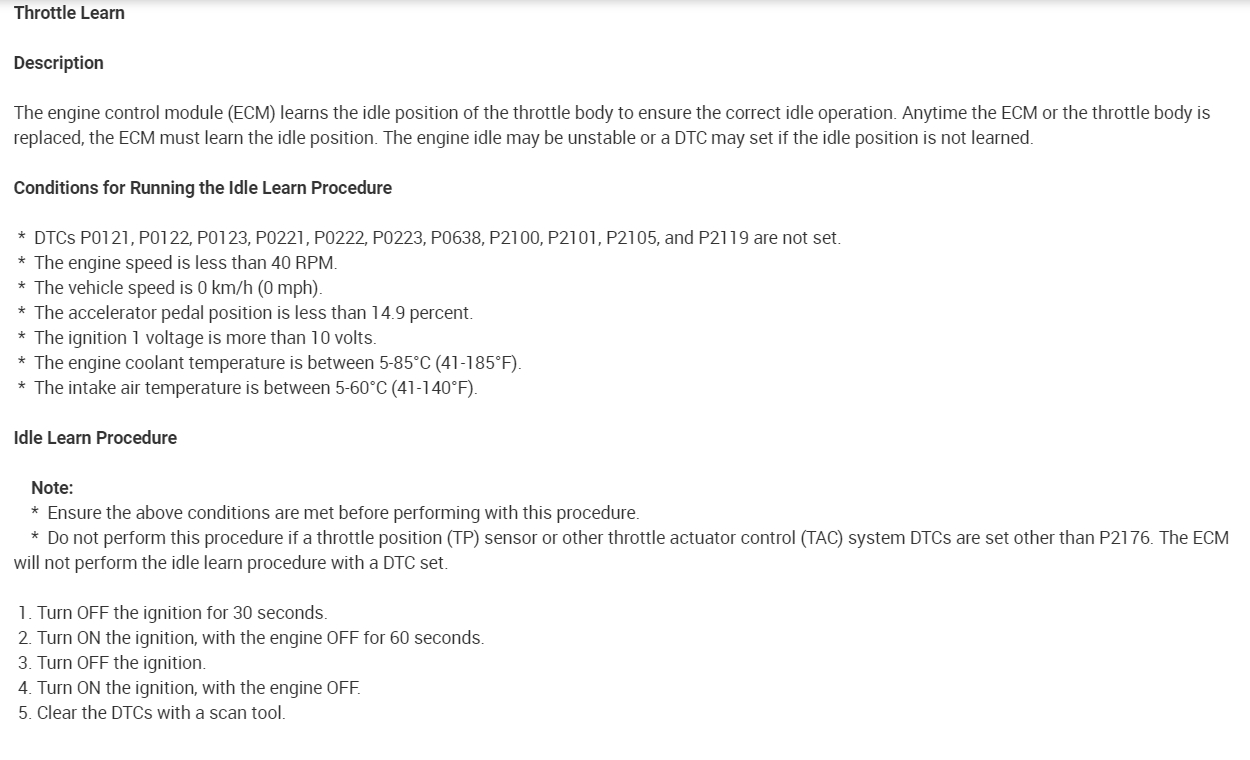How To Relearn Throttle Body With Scanner

The internal combustion engine (ICE), while steadily giving way to electric power, isn't disappearing overnight. Millions of vehicles with ICEs, and increasingly complex hybrid systems that incorporate them, remain on the roads. One maintenance task that will remain relevant for years to come, even with the rise of EVs, is throttle body relearn. But even this seemingly mundane procedure is being impacted by the rapid advancements in automotive technology. This article explores how to relearn a throttle body with a scanner, while looking ahead to the future of vehicle diagnostics and maintenance in an increasingly electrified and intelligent world.
The Ever-Evolving Throttle Body Relearn
Traditionally, throttle body relearn was a relatively simple process. After cleaning or replacing the throttle body, the vehicle's engine control unit (ECU) needed to "relearn" the idle position. This ensures smooth idling and proper acceleration. Older vehicles often had manual procedures involving specific sequences of ignition key turns and pedal presses. Thankfully, modern vehicles offer a much simpler approach: the diagnostic scanner.
Using a diagnostic scanner, you can initiate the relearn procedure directly through the vehicle's OBD-II port. The scanner communicates with the ECU, guiding it through the necessary steps to calibrate the throttle position sensor. This is a much more precise and reliable method than relying on manual procedures, which can be prone to errors. However, even this seemingly straightforward process is becoming more complex.
Challenges in Modern Vehicles: Modern vehicles are incorporating more sophisticated engine management systems. The ECU is no longer solely responsible for controlling the engine; it interacts with a network of other control modules, including the transmission control module (TCM), the anti-lock braking system (ABS), and even the body control module (BCM). This interconnectedness means that a throttle body relearn may require additional steps or considerations. For instance, some vehicles require a "drive cycle" to be completed after the relearn process. This involves driving the vehicle through a specific set of conditions (e.g., accelerating to a certain speed and then decelerating) to allow the ECU to fine-tune its settings.
The Hybrid and Electric Vehicle Impact
While pure electric vehicles don't have throttle bodies in the traditional sense, hybrid systems present an interesting case. Many hybrids still utilize an ICE for certain driving conditions. In these vehicles, throttle body relearn will still be necessary, albeit perhaps less frequently due to the engine's reduced workload. However, the hybrid system's complexity adds another layer. The ECU must now coordinate the throttle body with the electric motor and regenerative braking system, demanding even more precise calibration.
Emerging Technologies: The rise of over-the-air (OTA) updates is also changing the landscape of vehicle maintenance. In the future, throttle body relearn (and other diagnostic procedures) might be performed remotely via OTA updates, potentially eliminating the need for a physical scanner. This is particularly relevant for electric vehicles, where software plays an even more crucial role. Imagine a scenario where the vehicle automatically detects a need for throttle body recalibration (perhaps based on sensor data) and initiates the process itself, without any human intervention. This could minimize downtime and ensure optimal performance.
Smart Automotive Solutions and the Future of Diagnostics
Smart automotive solutions, including advanced driver-assistance systems (ADAS) and connected car technologies, are generating vast amounts of data. This data can be used to predict and prevent potential maintenance issues, including problems related to the throttle body. Predictive maintenance algorithms can analyze sensor data (e.g., throttle position, engine speed, and fuel consumption) to identify anomalies and alert the driver or service technician before a problem occurs.
The Role of AI and Machine Learning: Artificial intelligence (AI) and machine learning (ML) are poised to revolutionize vehicle diagnostics. Imagine an AI-powered diagnostic scanner that can not only perform a throttle body relearn but also analyze the vehicle's entire network of systems to identify the root cause of any underlying issues. This could lead to more efficient and accurate repairs, saving time and money. Moreover, AI could personalize the relearn process based on the driver's habits and the vehicle's operating conditions, further optimizing performance.
Challenges and Opportunities: The transition to a more data-driven and automated approach to vehicle maintenance presents both challenges and opportunities. Data security and privacy are paramount concerns. Ensuring that vehicle data is protected from unauthorized access is crucial. Furthermore, the automotive industry needs to invest in training and education to equip technicians with the skills necessary to work with these new technologies. However, the potential benefits are immense. By leveraging the power of data and AI, we can create safer, more efficient, and more reliable vehicles.
The future of mobility is electric, connected, and autonomous. While the throttle body relearn might seem like a small piece of the puzzle, it represents a broader shift towards a more sophisticated and data-driven approach to vehicle maintenance. As vehicles become increasingly intelligent, the tools and techniques used to diagnose and repair them will need to evolve as well. The journey ahead requires embracing innovation, addressing challenges head-on, and collaborating across the automotive ecosystem. This forward-thinking approach will ensure that we're ready for the future of mobility.
Visionary Note: Imagine a world where vehicles are self-healing, constantly monitoring their own health and automatically repairing minor issues before they escalate. The throttle body relearn, in its current form, might become a distant memory, replaced by proactive and seamless maintenance performed autonomously by the vehicle itself. This is the vision of a truly intelligent and connected transportation system – a system where mobility is safe, efficient, and sustainable.
